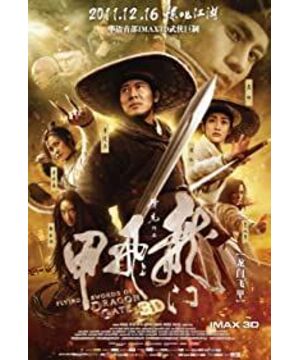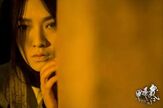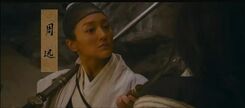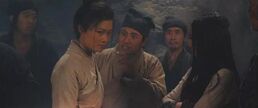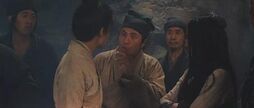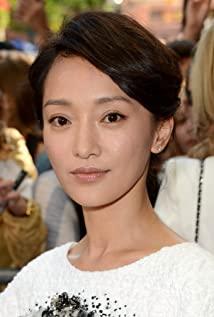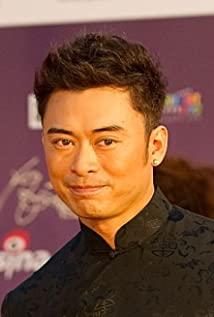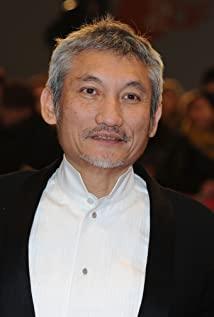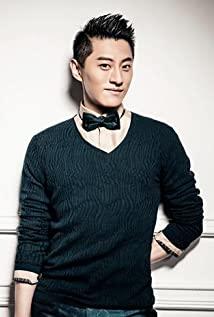Since I'm looking at the 2D version, I seem to have less of a say in the visuals. But even in 2D, you can imagine the 3D effect when you see flying knives, blades, birds, sand, pillars, blood beads, etc. Everyone uses slow motion to give you a hint, isn't it? Whether such deliberately designed shots to take advantage of 3D (even the plot: Zhao Huaian asked Yu Huatian to fight in the tornado, the lines and the process are like child's play) will not cause discrimination against 2D viewers. We will not analyze it here. But trying to recreate the visual spectacle of martial arts movies in 3D, I think, is on the right track.
Although judging from everyone's comments and my perception of 2D, the 3D effect this time is the best in Chinese. Tsui Hark does not deny that he is a director obsessed with technology, which is no different from big Hollywood directors like Cameron and Spielberg. However, I hate the 3D trend, and it is not limited to the countless pseudo-3Ds "created by the Avatar team" that follow the trend. I am also not interested in the 3D effects created by the real Avatar team. Among the limited three-dimensionality and color, brightness and comfort, I still value the latter.
But I still want to stress that I am not against technological innovation and its importance, and I admire Tsui Hark's attempts, and I can even assume that martial arts movies will emerge into a new world because of 3D technology. But no matter how much you praise its groundbreaking significance, the result of such an attempt is inherently bad. Although I haven't watched the 3D version of "Dragon Gate Flying Armor", since the most cutting-edge technology in today's film industry is not completely satisfactory, it is not too much to make such a conclusion about "Dragon". In fact, the opening scene of the shipyard's dazzling mirror made a viewer in the theater wonder if it was a cartoon. It can be seen that Tsui Hark's iconic fake special effects are still so obvious under the 3D effect.
In a word, I have no doubt that the breakthrough of 3D technology will bring the film into a new era, but in my eyes, before this era really arrives, all 3D works (of course, excluding those who make money under the banner of 3D) ) are respectable failures. And from the current point of view, this breakthrough cannot be completed by Chinese filmmakers.
In fact, I think everyone may have overlooked one point: the technology itself is not only the impact of the picture. If considered from this starting point, "Dragon Gate Flying Armor" is not technically excellent, but poor. The biggest problem is the sound effects: the overly dense soundtrack can also be interpreted as stylized, the low-quality use of dialects makes vulgar mistakes, and the thin dialogue and ambient sounds of a TV series make people wonder if this is a 2011 blockbuster.
In the storyline, there are many deliberate actions and incomprehensible logic in the details. They always fall into the same pattern and seem to become the style. The most obvious is the direction of the villain. Even if there are breakthroughs in performance and character, it still begins. It was awesome, it was awesome, it was awesome and awesome in the middle, and it was still awesome and awesome at the end, and then we killed it all of a sudden, and when the audience thought about it together, it was still a brain-dead. The plots of the real and fake Yuhuatian and the beauty undercover all seem quite low-level and deliberate.
What's worse, as a sequel and tribute to "New Dragon Inn" to some extent, "Dragon Gate Flying Armor" has almost exhausted the former's excellence: the tension of the three-dimensional conflict of several waves of people in an inn is seemingly complicated. In fact, the relationship between the characters is too simple to dissolve; the martial arts character who protects the loyal and conscientious and cherishes the family and the country is dissolved by the conspiracy to hunt for treasure; "Dragon Gate Flying Armor" is less than "New Dragon Gate Inn" by Tony Leung, Maggie Cheung, Lin Qingxia, and less Tsui Hark, who is right to my appetite at a special node.
In this way, both ends of the dichotomy were scored low by me. But from the perspective of the film industry, the excellent visual effects as a benchmark and breakthrough are still worthy of praise. The question is, is an unbalanced movie with a dichotomy a good movie?
Everyone may give a different answer. The revolution in perception brought about by the advancement of technology is the inherent charm of movies, and it is also the essence of movies that distinguish them from novels and other arts in the minds of many people. The essence of film is its visual rather than storytelling.
Having said that, I can correct my point of view: most of the time, what we want is not a movie that tells a good story, but a story that is expressed in movie form. Pictures are the essence of movies, and stories are the essence of the world we live in.
View more about Flying Swords of Dragon Gate reviews


